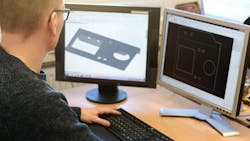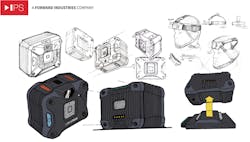5 Top Pain Points in Industrial Design
Creating a successful product is always more than a matter of purely implementing functionality. At no time more than today, it’s crucial to deliver product functionality in a manner that’s ergonomic and maintains a feature set of clear value to businesses and end users—all while being aesthetically pleasing.
The user experience of a product, either physical or digital, will determine how well a user will receive it and whether they will recommend it to others. The charter of the industrial designer is to smooth the interface between user and device to produce a desirable meaningful interaction. Their job has never been more challenging than today, as the best-in-class products have set a high bar for user expectations.
Here are the top five pain points facing industrial designers today:
1. Communicating the value of the product design.
It’s important to have all constituents involved in making product decisions understand the value of optimized design. This includes those serving various functional roles inside the company as well as people on the outside, such as those who make buying decisions, products support, as well as end users.
It’s not always easy to quantify or communicate the value of a well-designed product. In many cases, end users can’t always even articulate why they choose one product or brand vs. another. In many instances, where products offer a similar set of features, the one that’s well-designed is the one that will attract the user to make the purchase.
Consider cell phones. You can do virtually anything the latest iPhone does with a similar-generation Android device. In some cases, the Android phone may even have unique differentiating features. By applying superior design of the hardware and software user experience, Apple has created a brand that not only garners top product sales, but does so at a price premium.
2. Balancing conflicting requirements.
Designers are challenged with balancing diverse needs in creating a superior product. Product cost and size are obvious constraints. Less obvious is evaluating the user and the use environment to understand what features or aspect of a design will yield value to the customer.
While user need is the driving factor in good design, it must be balanced against the frequent necessity to negotiate characteristics such as heat, volume, weight, battery capacity, etc. Lastly, one can’t ignore the challenges related to product development time and budgets. Given unlimited time and budget, there are always ways to analyze, iterate, and improve. But, of course, time and budget constraints are always in the mix. Great design arises when user needs are met using novel approaches to deliver the user experience while satisfying the physical requirements.
3. Respecting the process of upfront design.
From an engineering point of view, upfront design work doesn’t necessarily produce direct product progress. Nonetheless, research into, and exploration of, the proposed design is critical to understanding the various needs and wants of users.
Quality upfront design work enhances the understanding of the current and anticipated product marketplaces in terms of direct competition and products in adjacent markets that drive market and aesthetic trends. The goal here is to generate or adjust requirements so that they’re closely coupled with user needs.
4. Making sure to create early prototypes.
Design begins with a study of user needs based on early assumptions, marketing input, and requirements based on user needs. When design work commences, whether it’s a digital or a physical product, it’s critical that the design remain aligned with the user. Using physical and digital models to evaluate design components, subsystems, or whole assemblies are important to check function and usability along the way.
Early prototypes enable designers to test assumptions and engineers can often rely on mathematical models to drive functional development. Likewise, the designers employ physical models or software prototypes and wireframes to “see and touch” the design alternatives.
Depending on the qualities being evaluated, various approaches can be taken to measure qualitative feedback from a prototype. Use of tools such as Figma, Webflow, eye tracking, cognitive walkthrough, VR environments, and others allow for assessment of these qualitative characteristics.
5. The need to master multiple design tools.
As with most engineering disciplines, designers have a raft of tools they’re challenged to master to create a world-class design. A variety of tools unique to designers are used to create geometry, render digital models, create workflows and interactive clickable prototypes, etc. These days, they often use VR tools and headsets to immerse the product into virtual environments to assess the design.
For software design, a host of tools are used to wireframe and prototype software that assess both aesthetics and application flow. Examples of these tools include Adobe Suite, Figma, Sketch, Miro, Invision, Lottie, Marvel, Webflow, Zeplin, and Principle. No one person can have thorough expertise in all of these tools, but current day designers are challenged to establish competence in more tools than ever before.
In a competitive landscape, design is often the key differentiator between one company’s products and those of its competitors. Designers must navigate between conflicting constituencies to find the balance in creating products that are engaging, attractive, and meaningful to the user. All of this must be accomplished within the project and product constraints of development and product cost, as well as schedule. The key to success is a multidisciplinary team that holds user-centric design as a polestar.
About the Author
Mitch Maiman
President and Cofounder, Intelligent Product Solutions
Mitch Maiman is the President and Cofounder of Intelligent Product Solutions (IPS), a leading product design and development firm. He honed his deep knowledge of product design on the strength of a 30-year career with companies that manufacture commercially successful products for the consumer, industrial, and DoD markets. Prior to launching IPS, Mitch was VP of Engineering at Symbol Technologies.
Always espousing a hands-on approach to design, he holds a portfolio of numerous United States and international patents. Mitch holds a Bachelor of Science from Hofstra University, a Master of Science in Mechanical Engineering from Columbia University, and an MBA from Fairleigh Dickinson University.

